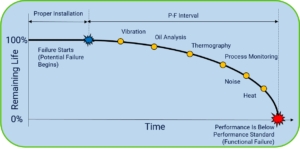How You Have Your PMs Addressing The Right Issues, Make The Effective
 In the previous articles, we looked at what type of analysis to use to evaluate the effectiveness of the PMs and if they are cost effective. Once the PMs have been optimized to ensure they are addressing the right failure modes, then they need to be made efficient. Below is an excerpt from a recent article in SMRP’s Solutions Magazine on how to make PM efficient using the lean tools.
In the previous articles, we looked at what type of analysis to use to evaluate the effectiveness of the PMs and if they are cost effective. Once the PMs have been optimized to ensure they are addressing the right failure modes, then they need to be made efficient. Below is an excerpt from a recent article in SMRP’s Solutions Magazine on how to make PM efficient using the lean tools.
 Would you spend $100 every week to prevent a possible issue that will result in a loss of $10? Probably not, so why is that we do that with our maintenance programs every single day? Often, PM and PdM activities are put into place without any thought to the economic impact of the activity. While in theory the PM or PdM activities will prevent or mitigate the consequences of the failure, is implementing one of these activities the right thing to do?
Would you spend $100 every week to prevent a possible issue that will result in a loss of $10? Probably not, so why is that we do that with our maintenance programs every single day? Often, PM and PdM activities are put into place without any thought to the economic impact of the activity. While in theory the PM or PdM activities will prevent or mitigate the consequences of the failure, is implementing one of these activities the right thing to do?
 If you are lucky enough to have good failure data history in your CMMS, you are one of the few. But even if you have the data, can you use it to make a difference to your organization? Obviously, the data can be used to perform certain reliability engineering analyses, but what can those without reliability engineering experience do with the data?
If you are lucky enough to have good failure data history in your CMMS, you are one of the few. But even if you have the data, can you use it to make a difference to your organization? Obviously, the data can be used to perform certain reliability engineering analyses, but what can those without reliability engineering experience do with the data?








 There has been much discussion (and often debate) around the P-F curve. The P-F curve illustrates the relationship between the warning signs that are detectable by various technology or methods and the progression of the failure. What is often not discussed and overlooked, is what happens before the equipment starts to deteriorate.
There has been much discussion (and often debate) around the P-F curve. The P-F curve illustrates the relationship between the warning signs that are detectable by various technology or methods and the progression of the failure. What is often not discussed and overlooked, is what happens before the equipment starts to deteriorate.